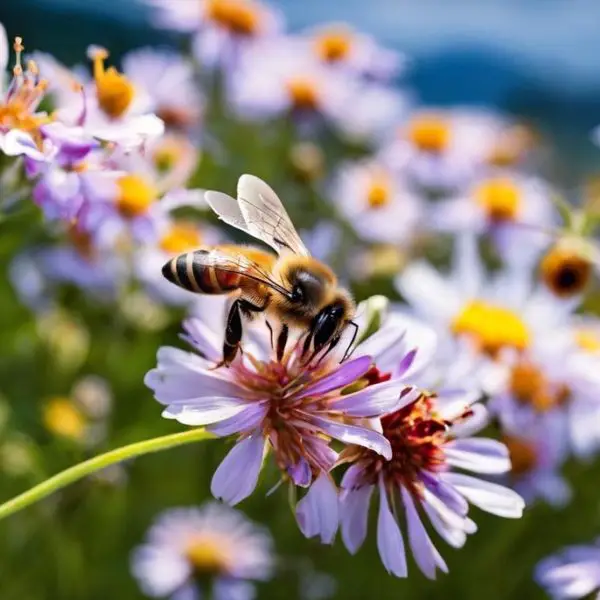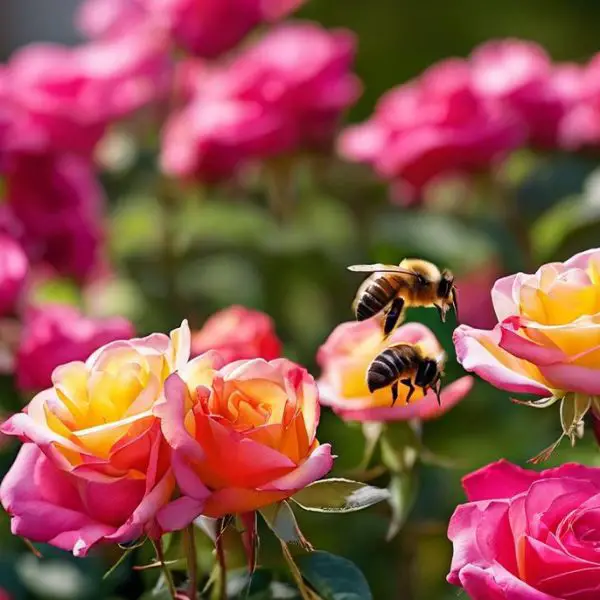Gardens are more than just a collection of plants; they are a hub of activity where the dance of pollination occurs, and creatures like bees play the lead role. Among the floral ensemble, clematis stands out, not only for its climbing beauty but also as a beacon for these industrious insects. These plants, with their profuse and often vibrant blooms, are more than mere ornamental features; they are vital sources of nectar and pollen that attract a variety of bees. In the intricate world of a garden, understanding the special relationship between clematis and bees is essential for any gardener wanting to encourage pollinator populations. From the large, majestic blooms that serve as a dining table for our flying friends to the more understated varieties that buzz with bee activity, the clematis genus offers something for every pollinator-friendly space.
Benefits of Clematis to Pollinators
Clematis – A Bee Magnate in Your Garden
Are you looking to transform your garden into a buzzing haven? Look no further than the versatile vine known as clematis. Boasting a parade of petals in a wide array of colors, these climbers don’t just add vertical interest and a pop of color to your outdoor space – they are also incredibly beneficial for attracting bees. Thanks to their generous bloom time and array of flower styles, clematis plants are a favorite among these essential pollinators.
When it blooms, clematis stands out as a nectar-rich source that bees simply can’t resist. The star-shaped flowers provide an accessible flat landing platform, perfect for both large and small bees to dance upon while they forage. This attribute is crucial during early spring when food sources are scarce. Early-flowering varieties of clematis can offer an invaluable resource to bees emerging from hibernation when other floral menus are limited. As clematis can continue to bloom through to fall, they help sustain the bee population throughout the growing season.
Beyond offering nectar, the diverse family of clematis includes plants that can bloom at varying times, ensuring that bees have a reliable source of sustenance from the early days of spring until the leaves start to fall. This continuity not only supports local bee populations but also fosters a more vibrant and productive garden. By integrating clematis into the landscape, gardeners can revel in the hum of a lively ecosystem and take pride in supporting the health of our vital bee friends.

Best Clematis Varieties for Bees
When diving into the world of clematis varieties, bee-friendly options abound. For those with a keen interest in bolstering the bustling activity of bees in their garden, selecting clematis plants that boast a simple, open flower shape should be top priority. These accessible blooms provide an easy landing platform for bees, making the nectar and pollen conveniently reachable. Varieties such as Clematis ‘Huldine’ or ‘Prince Charles’ offer open star-shaped flowers, ensuring bees don’t have to navigate through layers of petals to reach the rich rewards within.
For optimal bee attraction, garden enthusiasts should zoom in on varieties that produce an abundance of pollen. Clematis species like Clematis viticella and its cultivars are particularly known for their pollen-rich stamens, visible at the heart of their somewhat bell-shaped flowers. These blooms not only catch the eye with their striking colors but also serve as a buffet for our pollinator pals. One remarkable variety in this species is ‘Madame Julia Correvon’, famed for its wine-red petals and stamina in a variety of climate conditions.
Moreover, incorporating bi-colored or brightly hued clematis plants can also improve your garden’s allure to bees. These include the likes of Clematis ‘Piilu’ with its pretty pink petals and pronounced dark pink bars, and the vibrant blue flowers of Clematis ‘Perle d’Azur’. Such striking contrasts and vivid colors are like neon signs to bees, guiding them toward the sweet nectar and nutritious pollen. In the quest to create a haven for bees, choosing the right clematis varieties is a leap forward in nurturing a thriving, eco-friendly garden space.

Caring for Clematis to Optimize Pollinator Attraction
When it comes to caring for clematis with the intent to charm those busy bees, don’t overlook the significance of proper planting and pruning.
To kick things off, make sure to plant your clematis in a location that basks in at least six hours of sunlight; however, it’s just as crucial to keep their feet cool and shaded. This can be effortlessly accomplished by using mulch or placing low-growing shrubs around the base.
Rich, well-draining soil is the secret sauce for a flourishing clematis, so consider enhancing your soil with compost or well-rotted manure to provide a nutrient-packed foundation for growth.
Furthermore, appropriate pruning not only encourages robust growth but also promotes an abundance of flowers, which in turn provides more foraging material for bees.
Each clematis falls into one of three pruning categories—Group 1, 2, or 3—based on their flowering time and age. So, it’s pivotal to identify your clematis group to determine the optimal pruning period.
As a rule of thumb, Group 1 clematis, which flowers in the spring on the previous year’s growth, requires light pruning just after blooming.
On the flip side, summer and fall bloomers, belonging to Groups 2 and 3 respectively, thrive with a more vigorous cutback to stimulate new growth and future blooms.
Regular watering, especially in dry spells, ensures that clematis have enough moisture to produce their tantalizing flowers.
Additionally, consider implementing a bi-annual feeding regimen with a balanced, slow-release fertilizer to support vigorous growth and bounteous blooms.
By tailoring the care to both the clematis’ needs and the bees’ preferences, one fosters a bee haven with clematis as the crown jewel. This not only nurtures bee populations but also sets the stage for a mesmerizing, fluttering exhibit right in the comfort of one’s own green sanctuary.

Creating a garden that sings with the wings of bees is a rewarding endeavor. By integrating well-chosen varieties of clematis, one can transform a simple garden into a sanctuary for these vital creatures. Careful consideration of the needs of both the plants and the pollinators will ensure a thriving, vibrant, and harmonious garden ecosystem. Tending to clematis, understanding its appeal to bees, and watching the symbiosis between flora and pollinator can be an enriching experience, instilling a deeper appreciation for the natural interactions in our own backyards. By fostering these relationships, our gardens can become a testament to the beauty and importance of coexistence between plants and pollinators.


